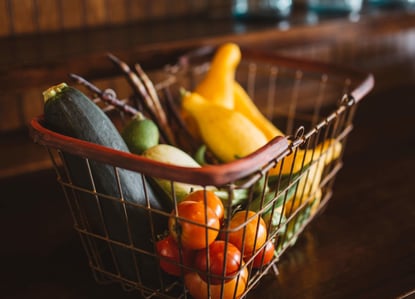Posted in Better-for-You on November 14, 2016
For many foodservice operations and manufacturers, clean label is a way of wiping the slate clean–no more questionable ingredients or unhealthy additives that could raise the eyebrows of increasingly health-conscious consumers.
Driven by consumer demand, clean label has passed the threshold from foodservice trend to industry rule, according to Innova Market Insights, which reports that a whopping 91% of American consumers consider food and beverages with recognizable ingredients to be healthier options.1 Shorter, simpler ingredient lists help operators and manufacturers stand tall in the eyes of consumers. But what does it mean to be clean? Keep these five things in mind as you try to find your balance and ride the rapidly rising clean foodservice wave.
- Clean label is not synonymous with “natural.”
Though often contrasted with artificial and GMO-based ingredients, “natural” can carry a wide variety of definitions. Clean concepts, on the other hand, tend to be broader, encompassing wholesomeness, minimal processing and product transparency. To avoid controversy over an exact definition of natural, companies are focusing on specificity and clarity–shorter, clearer lists of more recognizable ingredients.2
- The Food and Drug Administration has updated how it defines “healthy.”
The FDA.’s update is intended to be consistent with its new Nutrition Facts label, which gives consumers additional nutrition information, such as added sugars, vitamin D and potassium.3 A key highlight of the “healthy” update is a low-fat requirement with amounts of mono- and polyunsaturated fats listed on the label (the amounts declared must constitute the majority of the fat content).4 The FDA's update provides temporary guidance as the agency finalizes a definition of “healthy” that matches up with the new Nutrition Facts. Read here about the FDA's menu labeling guidelines.
- Consumers have their own definition of healthy.
Americans have a wide range of opinions on what healthy means, according to the International Food Information Council Foundation’s (IFIC) 2016 Food and Health Survey. Top answers include no preservatives or additives (29%), natural ingredients straight from nature/whole foods (19%), no artificial ingredients or flavors (17%), no chemicals/hormones/pesticides/antibiotics (14%), and no processing (11%).5 Protein emerged as an especially sought-after nutrient associated with healthy food, as 64% of Americans reported they’re trying to consume more of it.5 Sustainability is also used to define healthy: 73% expressed a strong preference for food that is made in a sustainable way.5
- Stating ingredients plainly is just plain smart.
When an ingredient on a label is unclear, consumers are left to wonder if it’s an additive. By using ingredient names that consumers can immediately recognize, like vitamin C instead of ascorbic acid, manufacturers can communicate more effectively with the consumer. In the IFIC’s survey, 83% said they viewed vitamin C as healthy, but only 21% said they viewed ascorbic acid as healthy.5 The morale of the story: never assume the consumer will know the technical name for a common ingredient that is generally considered healthy.
- Clean label snacks need a sweet story for consumers to chew on.
Clean label isn't just about using a minimal number of ingredients and simple ingredients with readable names. It's also about transparency, disclosure and connecting with consumers on a personal level. A story about healthy snacks' origins or ingredient sourcing with descriptors like “artisan” and “hand-crafted” can help build trust and confidence in the consumer. Social responsibility and clean foods are often closely linked and cast as the “clean eating” or “real food” movement, which incorporates health, animal welfare, social justice and environmental sustainability, as well as buzzwords like “fair trade,” “free range,” “green,” “local” and “organic."6
How do you see the growing popularity of clean marketing affecting snacking trends and menu innovation? Do you agree that the clean rage is here to stay? Feel free to come clean below.
2 Scott-Thomas, Caroline, Clean label has become industry standard, says Innova, FoodNavigator.com, July 15, 2015
3 Balentine, Douglas, Making Sure ‘Healthy’ Means What It Says on Food Packages, FDA Voice (blog), U.S. Food & Drug Administration, Sept. 27, 2016
4 Nunes, Keith, “F.D.A. updates definition of ‘healthy,’” Food Business News, Sept. 27, 2016
5 Gelski, Jeff, “Consumers continue to redefine ‘healthy,’ ‘natural,’” Food Business News, May 12, 2016
6 Berry, Donna, “Formulating for the ‘real food movement,’” Food Business News, June 9, 2016



